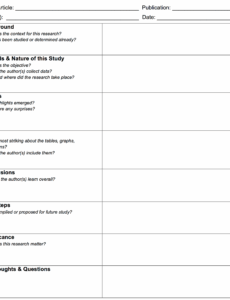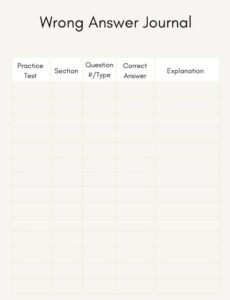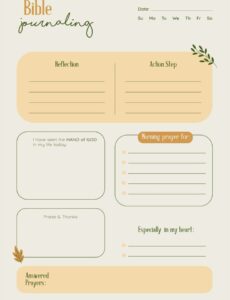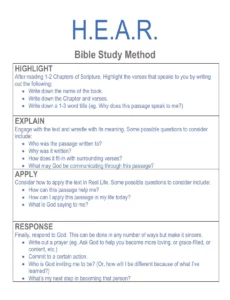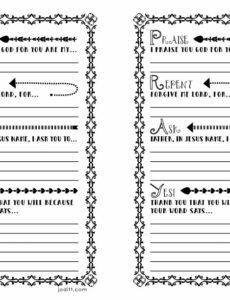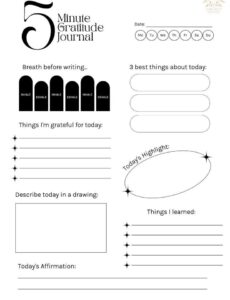Teaching third graders can be an incredibly rewarding experience, full of growth and discovery, especially when it comes to mathematics. At this stage, children are moving beyond basic arithmetic and starting to grapple with more complex concepts like multiplication, division, fractions, and geometry. It’s a pivotal time where understanding “why” is just as important as knowing “how.” But how do we encourage that deeper level of thinking and self-expression in a way that truly sticks?
Enter the power of math journals. These aren’t just empty notebooks; they are dynamic spaces where students can explore their mathematical thoughts, articulate their problem-solving strategies, and build a stronger connection to numbers. For busy educators and homeschooling parents, having a well-designed framework can make all the difference. That’s precisely where a dedicated 3rd grade math journal template comes into play, offering structure while fostering boundless creativity and critical thinking.
Why Math Journals Are a Game-Changer for 3rd Graders
Imagine a learning tool that not only helps your students grasp tricky math concepts but also empowers them to communicate their understanding clearly and confidently. That’s the magic of a math journal. For third graders, who are often buzzing with energy and curiosity, these journals provide a quiet space for reflection and a tangible record of their learning journey. It’s about much more than just getting the right answer; it’s about understanding the journey to that answer.
One of the primary benefits is the shift from rote memorization to genuine conceptual understanding. Instead of simply performing calculations, students are encouraged to explain their reasoning, draw diagrams, or even invent their own problems. This active engagement with the material ensures that the learning is deeper and more lasting. When a child can articulate their thought process, it’s a strong indicator that they truly comprehend the subject matter, rather than just recalling facts.
Encouraging Deeper Conceptual Understanding
Math journals compel students to go beyond surface-level answers. When a teacher asks “Show me how you know,” the journal becomes the perfect canvas. It allows children to write about their thought process, illustrate their steps, and connect new ideas to what they already know. This practice solidifies their understanding of concepts like equivalent fractions or the relationship between multiplication and division, making abstract ideas more concrete and relatable for their age group.
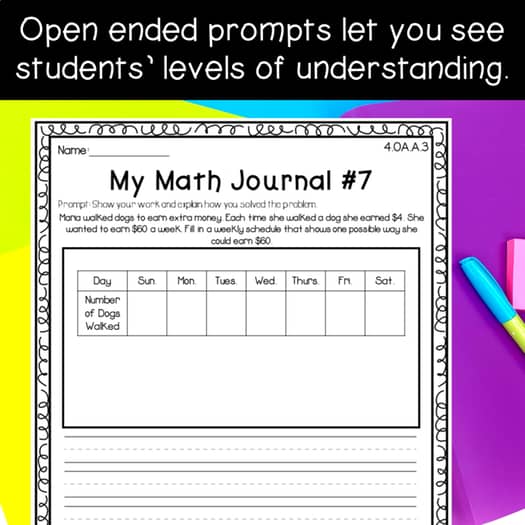
Boosting Problem-Solving Skills
The very act of journaling math ideas encourages students to approach problems from multiple angles. They might try one strategy, reflect on its effectiveness, and then document an alternative method. This iterative process is crucial for developing robust problem-solving skills that will serve them well in all areas of life. It fosters resilience and a willingness to experiment, turning challenges into opportunities for growth.
Beyond personal growth, math journals also serve as an invaluable assessment tool for both teachers and parents. They offer a unique window into a child’s mathematical mind, revealing not just what they know, but also where they might be struggling or excelling. This insight allows educators to tailor their teaching methods and provide targeted support. For parents, reviewing a child’s math journal can spark meaningful conversations about their learning and progress.
What to Look for in an Effective 3rd Grade Math Journal Template
When you’re ready to integrate math journals into your 3rd grade curriculum, choosing the right template can make all the difference between a thriving journaling practice and one that falls flat. A great 3rd grade math journal template isn’t just a collection of blank pages; it’s a thoughtfully designed tool that guides students without stifling their creativity. It should feel inviting and purposeful, encouraging consistent engagement.
Firstly, versatility is key. The template should provide ample space for various types of entries. Third graders are still very visual learners, so dedicated areas for drawing diagrams, models, or even mini-story problems are essential. Alongside this, there needs to be space for numerical calculations and written explanations. A balance between structured prompts and open-ended sections allows students to respond in a way that best suits their learning style and the specific math concept being explored.
Consider templates that include age-appropriate prompts or sections for reflection. These prompts can be simple, like “Explain how you solved this problem,” or more complex, such as “Write a word problem using multiplication that equals 24.” Some templates might offer sections for vocabulary, where students define new math terms in their own words, or areas for ‘I wonder’ questions, sparking further inquiry. The goal is to encourage deep thinking, not just surface-level responses.
Lastly, think about the practical aspects of using the template throughout the school year. Is it easy to reproduce? Can it be adapted for different math domains, from understanding fractions to exploring perimeter and area? A truly effective 3rd grade math journal template should be a flexible resource that evolves with your curriculum and your students’ growing abilities, making math exploration an exciting part of their daily routine.
Integrating math journals into your 3rd grade classroom or homeschooling routine is a powerful step towards fostering a deeper, more meaningful engagement with mathematics. These journals transform abstract concepts into personal experiences, allowing students to not only master skills but also to articulate their understanding with clarity and confidence. It’s an investment in their mathematical literacy and a celebration of their individual thought processes.
By providing a structured yet flexible space for mathematical exploration, you empower young learners to become active participants in their education. The growth in critical thinking, problem-solving, and communication skills witnessed through consistent journaling is truly remarkable. Embrace this dynamic approach and watch your third graders develop a lasting love and appreciation for the world of numbers.
